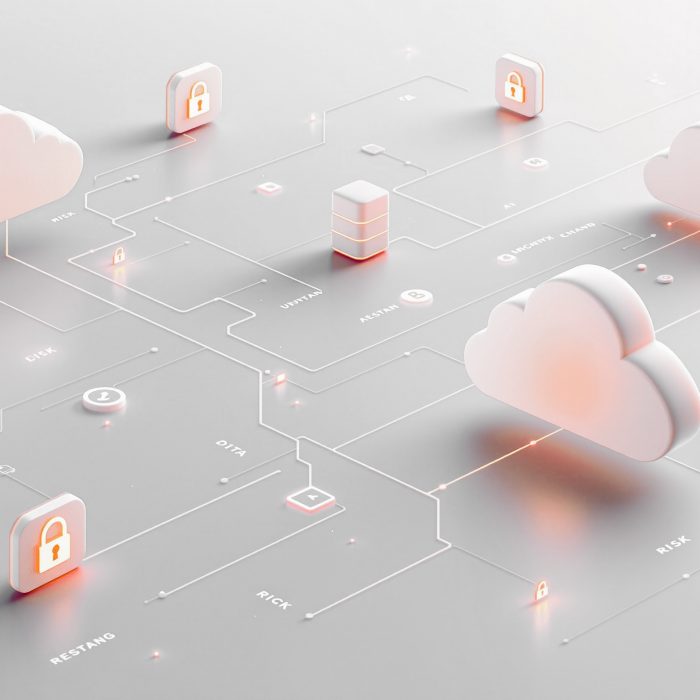Ever noticed how many big security breaches start with a compromised account that had more access privileges than it needed? That’s exactly why the principle of least privilege (POLP) should be part of every security strategy. When an employee with admin rights clicks on a malicious email or downloads infected software, they’re essentially rolling out the welcome mat for attackers.
But you don’t have to choose between security and productivity. You can implement least privilege without creating bottlenecks that frustrate your team.
Definition of the Principle of Least Privilege
POLP restricts user account permissions to only what’s necessary for people to do their jobs. Think of it as a “need-to-know” basis for your IT systems: users get the minimum access rights needed to complete their tasks, and nothing more.
This doesn’t just apply to user accounts, but also applications, systems, processes, and devices. Every entity within your network should operate with the minimum permissions needed to function properly.
POLP also works in tandem with Just-In-Time access approaches. While the least privilege model establishes minimal baseline permissions as the default state, JIT provides temporary elevated access when needed for specific tasks. Together, they create a more robust security posture.
Why Least Privilege Matters in Cybersecurity
Implementing a least privilege policy has several major advantages:
- Minimized Potential Damage: When malware executes, it typically inherits the permissions of the user who ran it. Limiting admin privileges means limiting the damage it can do.
- Contained Security Incidents: If someone does manage to breach your defenses, least privilege cybersecurity practices prevent them from easily moving laterally through your network.
- Improved System Stability: Fewer people making system-wide changes means fewer crashes, conflicts, and configuration issues.
- Regulatory Compliance: Many frameworks (GDPR, HIPAA, PCI DSS) explicitly require least privilege access models. Implementing them isn’t just smart security, it’s often a legal necessity.
ADVA Optical Networking SE (now part of Adtran) experienced these benefits firsthand after implementing Admin By Request’s Endpoint Privilege Management product across 2,500 endpoints (then called Admin By Request PAM).
As their IT Director Tim Duggan explains: “Admin By Request has helped us to remove employees from the local Administrator group in Windows while still allowing them to do their job. They are able to quickly and easily get Administrator permissions to install software or change settings without permanent Administrator rights. This drastically reduces the chances of Malware infections through email or web browsing.”
Assessing Current Access Levels
Before implementing least privilege, you need to know where you stand. This assessment phase is a must for identifying unnecessary privileged accounts and establishing your baseline.
Comprehensive Access Inventory
Start with a thorough inventory that captures:
- User Accounts: Document all accounts, including regular user accounts, service accounts, administrative accounts, and vendor/third-party accounts
- Group Memberships: Identify all security groups and their members, paying special attention to groups with elevated privileges
- System Privileges: Map out permissions on file systems, databases, applications, and network devices
- Application Requirements: Identify which applications legitimately need administrative access to run and why
Tools for Access Assessment
Several approaches can help with this inventory.
- Directory Services Reports: Generate reports from Active Directory or other directory services.
- Privilege Management Solutions: Use tools like Admin By Request’s EPM solution to audit (and easily manage) current user privileges. The Clean Up Local Admins feature provides and comprehensive bird’s-eye view of who’s got what rights across your organization.
- Access Control Lists: Review ACLs on critical systems and data.
Identifying Privilege Creep
Privilege creep happens when users gain permissions as they change roles or take on new projects, without giving up old access rights. Keep an eye out for users with access to systems they no longer use, permissions that don’t match current job responsibilities, widespread admin rights across departments where they’re not needed, and multiple accounts with redundant elevated privileges.
A good privilege management solution gives you visibility into exactly what programs users need elevated privileges for, helping you identify and limit access rights.
Developing a Comprehensive Least Privilege Policy
Your least privilege policy should be detailed enough to guide implementation while remaining flexible enough to adapt to your organization’s growth. Here’s how to develop an effective policy:
Key Policy Components
- Scope Definition: Clearly state which systems, applications, and user groups fall under the policy.
- Access Classification: Establish categories for different access levels (standard user, power user, administrative) and define what makes up each level.
- Default Access Levels: Document the default access level for each role in your organization. Start with the most restrictive access possible, then add permissions only as necessary.
- Exception Management: Create clear procedures for handling legitimate exceptions, including who can approve exceptions, documentation requirements, time limitations, and review procedures.
- Enforcement Mechanisms: Detail how the policy will be technically enforced, including tools, monitoring systems, and audit procedures.
Implementation Timelines
Implementing least privilege isn’t something you can do overnight. Your policy should acknowledge this with a phased implementation schedule, clearly identified pilot groups, defined success metrics, and feedback mechanisms to refine your approach.
Many organizations find a phased rollout most effective, starting with IT departments who understand the security benefits, then expanding to other departments gradually while collecting feedback to fine-tune permissions.
Monitoring and Auditing Access
Setting up restrictions is just the beginning. Ongoing monitoring ensures your least privilege model stays effective as your organization evolves.
Key Monitoring Components for Least Privilege Access
- Privileged Activity Logging: Record details about all privileged activities including who performed the action, what action was taken, when it occurred, where it was initiated from, and success or failure status.
- Behavioral Analysis: Look for patterns that might indicate problems such as logins at odd hours, unusual command sequences, suspicious file access, and credential use across multiple endpoints.
- Regular Reporting: Create reports that speak to different audiences, including weekly summaries for security teams, monthly trends for management, and quarterly documentation for compliance.
Audit Procedures
Set up regular check-ins to keep your least privilege implementation on track: quarterly reviews to verify access matches job needs, yearly deep-dives into all systems and permissions, and additional reviews whenever organizational changes occur.
Effective monitoring is needed to maintain least privilege over time. With smart logging and privilege audit procedures in place, your team can catch potential security issues while they’re still manageable, not after they’ve grown into serious problems.
Strengthening Your Security Through Least Privilege
POLP isn’t just another security checkbox, it’s a fundamental approach that should underpin your entire security strategy. By removing permanent admin rights and implementing a comprehensive least privilege access model, you’re creating a security foundation that significantly strengthens your overall posture.
With the right tools, implementing POLP can actually enhance user productivity by streamlining privilege elevation processes. Instead of creating frustrating roadblocks, you’re building secure pathways that protect your organization while letting people get their work done.
Remember: security is a journey, not a destination. Ready to begin implementing least privilege in your organization? Start with Admin By Request’s Free Plan, which lets you try both of our access solutions on up to 25 seats per product – completely free, and with no expiration date.







